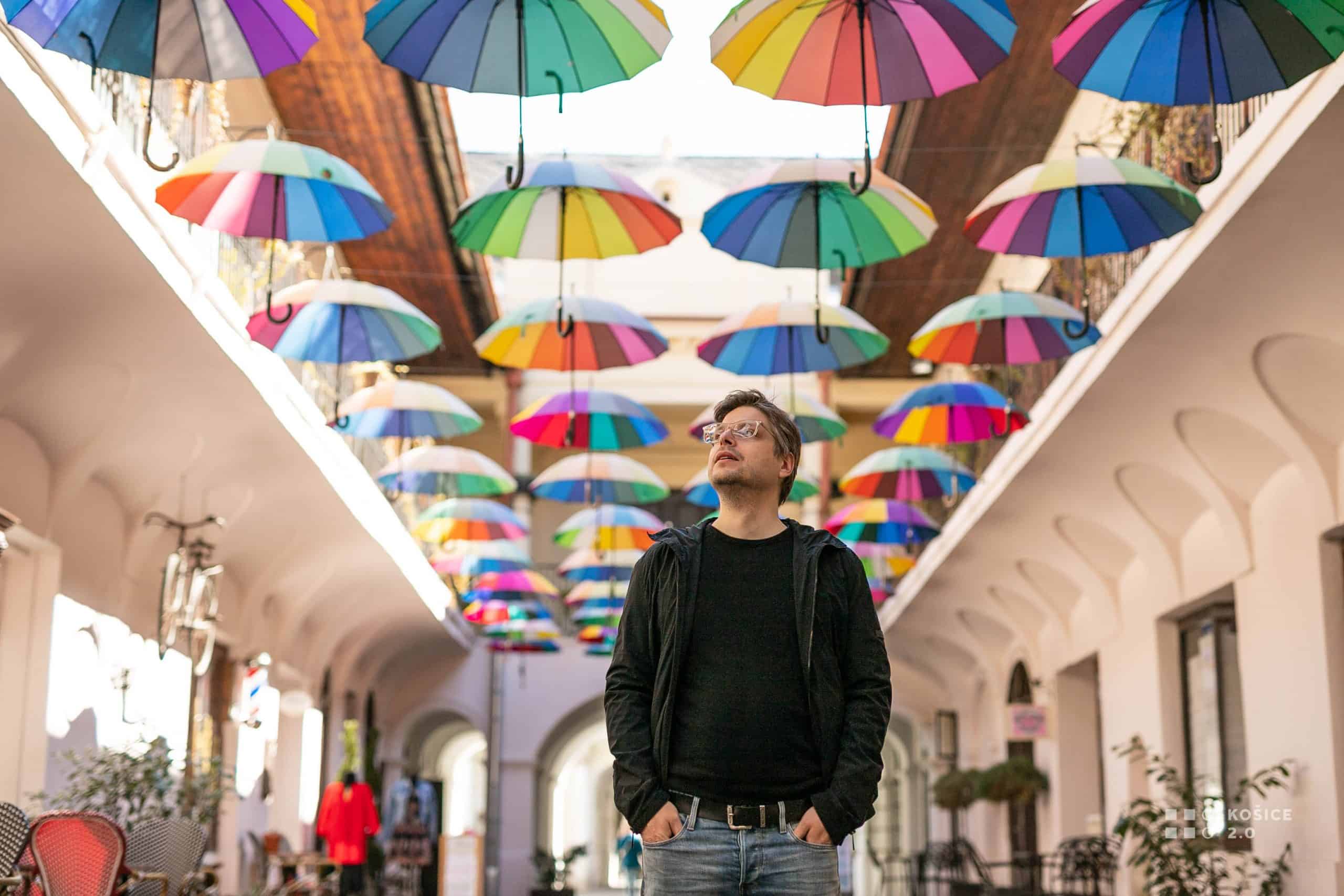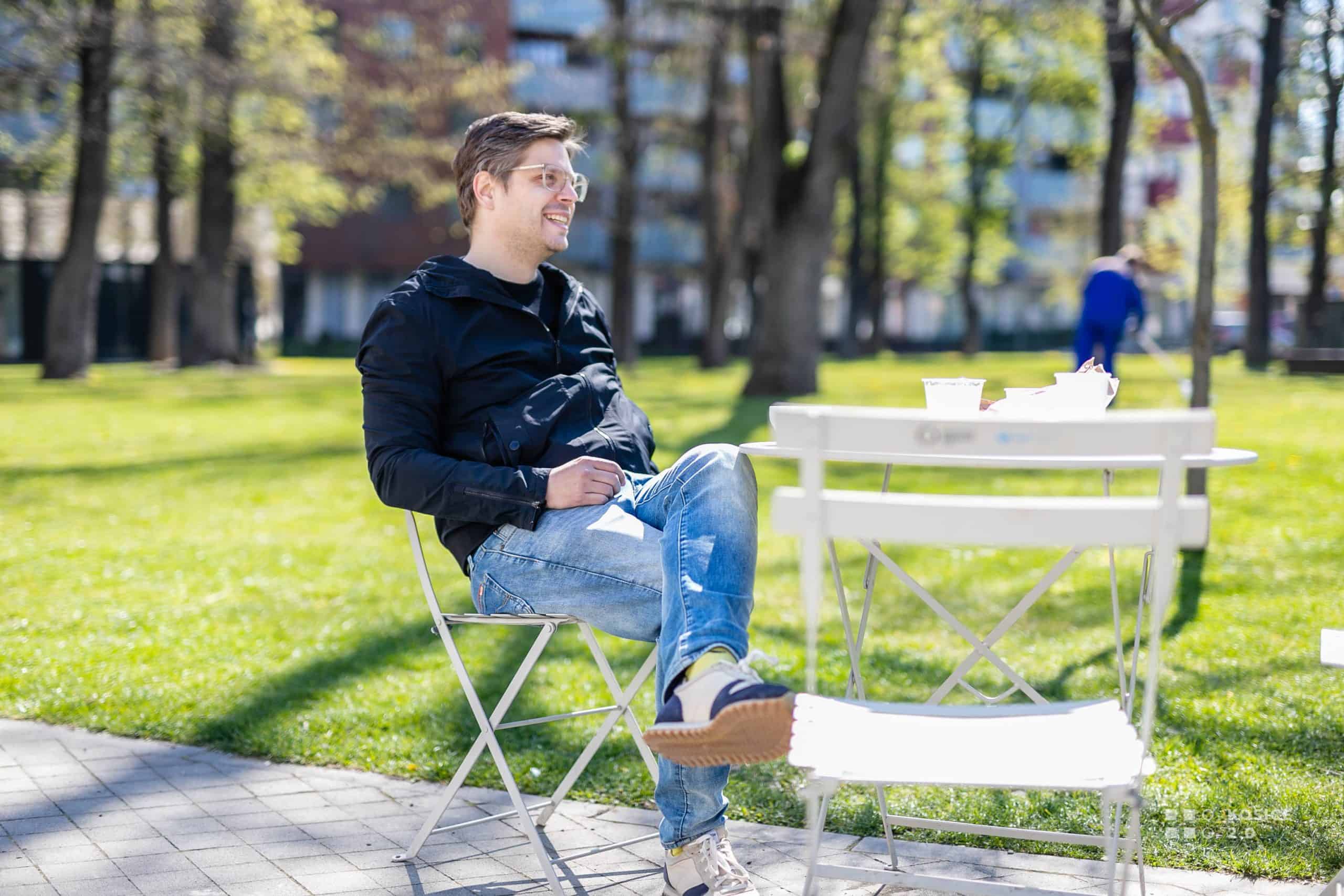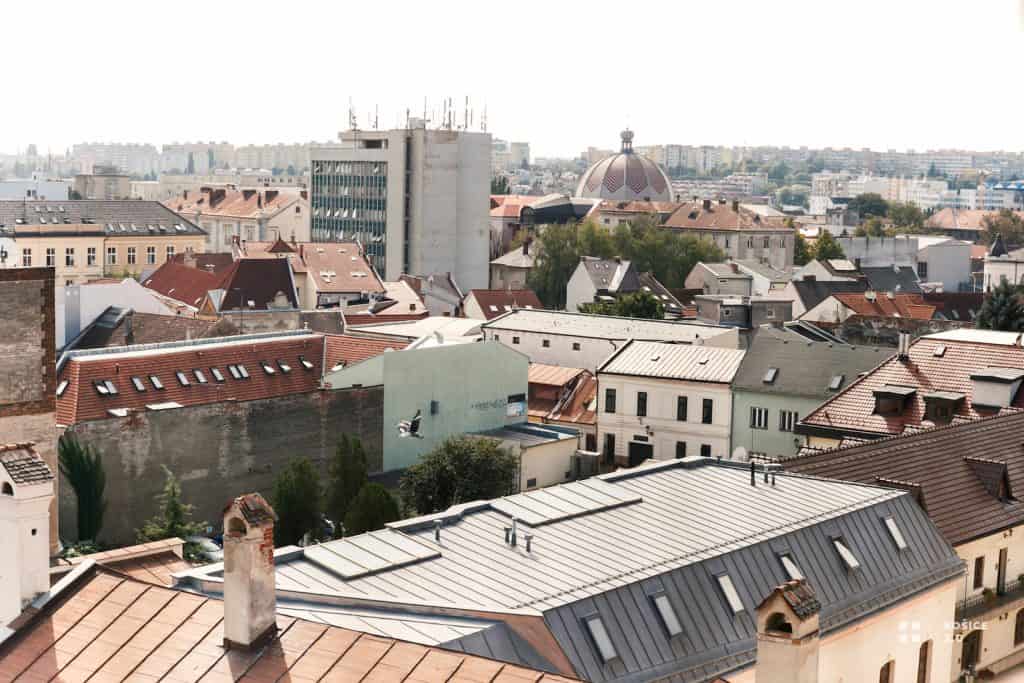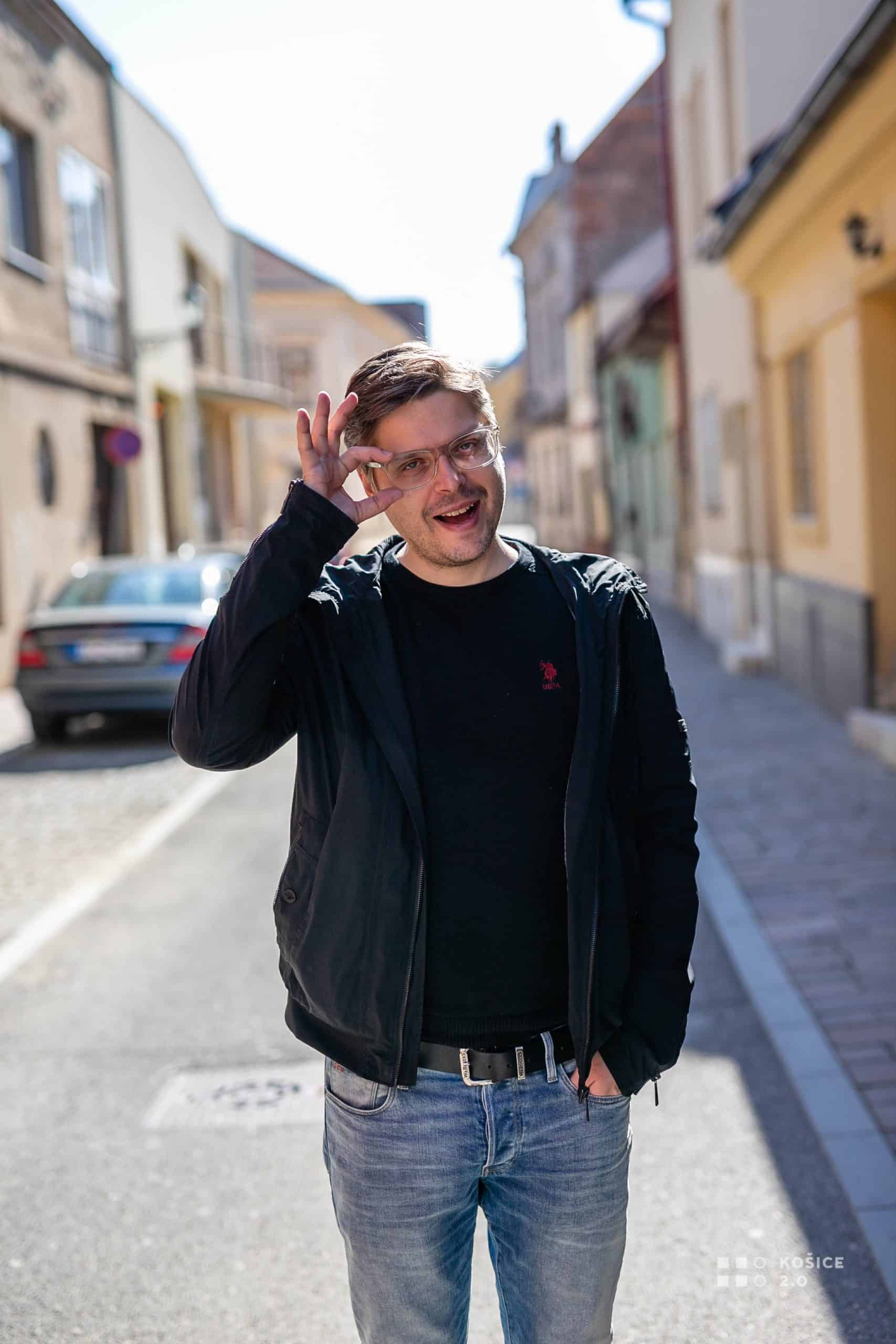Michal Hladký on creativity as the backbone of the ideal city
[Others]
He studied architecture and now works closely with the cultural and creative industry. We talked with the director of Creative Industry Košice, Michal Hladký, about the legacy of the ECoC project in Košice, why he is inspired by, for example, New Zealand, and what the ideal city of the 21st century should look like.
We meet in the wider city center, on the premises of Kulturpark Barracks. The former barracks were in the past separated by a fence and had a rather deterrent effect. Today, they are full of children, parents, students, and passers-by, who like to spend their free time here, whether at a cultural event or just – relaxing under the trees. It is a place that still takes us back to the atmosphere of 2013 when Košice became an important city on the cultural map of Europe.
Beginning of the successful project
“I familiarized myself with the ECoC concept in Graz, where I spent 2004 as an Erasmus student. Naturally, I was fascinated by places like Kunsthaus or Murinsel. This was a year after Graz became the European Capital of Culture. That’s when I understood what it could mean for a city of similar size to Košice.”
It’s been a few years since the ECoC project was implemented in the city. Today, Michal speaks of it as a rare coincidence. “Košice was a completely different city in 2007 than it is today. Talented people were leaving, and then the economic crisis hit in 2008. At the same time, there was the Faculty of Arts with its first graduates. With the emergence of IT Valley, a new sector, better-paid jobs, and a new audience was formed which was interested in the cultural life in the city.”
Things started to change when there was a lot of talk about the City of Košice’s intention to apply for the ECoC title. “Coincidentally, I had more time then, as I was dismissed from my Ph.D. studies (laughs). But a year-long break came in handy. I joined Peter Radkoff and people from the then IC Culture Train, who formed one of the ten working groups. They dealt specifically with contemporary culture.”Together, they began working on what the project should bring for the city and its inhabitants. At that point, the architects came to the fore. “At school, during assignments, we worked with public space in the city. We had it perfectly mapped. We also knew the potential hidden in the so-called brownfields and abandoned areas that resembled holes in the city. Aside from buildings, the city lacked cultural infrastructure.” Thanks to the project, the function of neglected places was restored, and the culture gained a new position in the city’s programming.
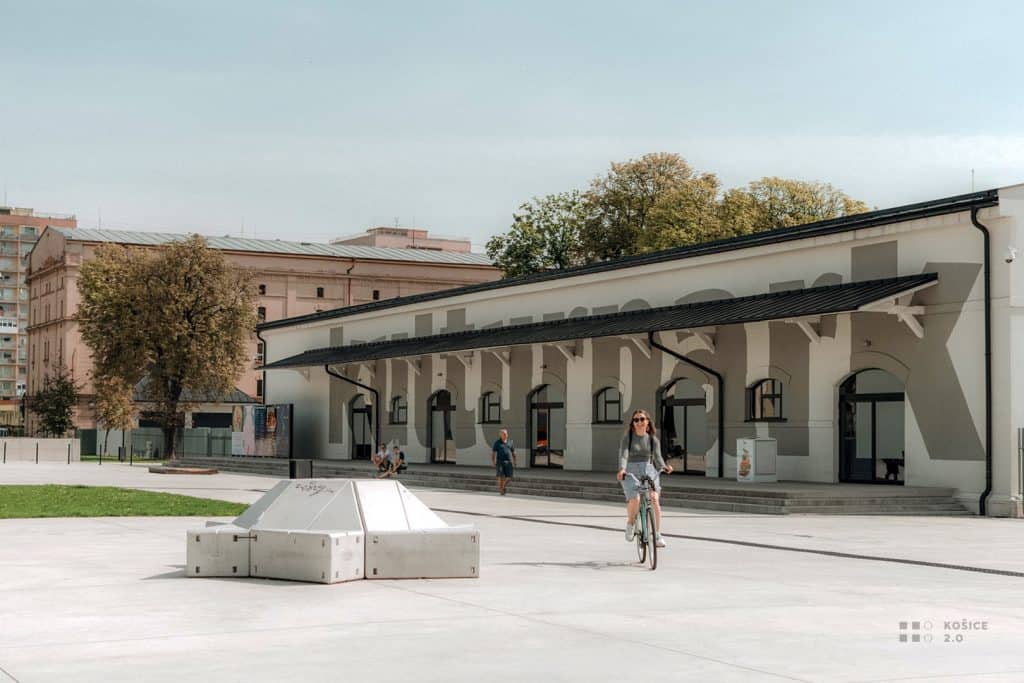
Foto: Maja Bodnárová
From student to director of Creative Industry Košice
In the beginning, the ECoC functioned mainly with the help of volunteers. “After a while, the city approached me with an offer for cooperation. I was in charge of preparing investment projects – documents for architectural competitions for Kulturpark Barracks, Kunsthalle, or Spots. At the same time, I tried to stick to the ECoC concept. That was my task until about 2010.”
Later, the agenda of investment projects was transferred from the non-profit organization Košice 2013 – ECoC to the city. Michal could then finally devote himself to developing the creative industry and international cooperation. “When speaking about development, I refer mainly to educational programs, based on which we later created the Escalator project. It still trains representatives of the cultural and the creative industry (CCI) in Košice and Slovakia. We also prepared a Creative Economy Master Plan, and after 2013, in May 2014, I became an NGO director. Its role has been and still is to support the cultural and creative sector.” The Creative Industry Košice organization took over the ECoC agenda related to international projects. It is a member of many networks, whether at home or abroad. In addition, it participates in the creation of strategic documents for the CCI and invites other sectors represented in Košice to cooperate.
The ECoC experience has enabled the city to grow
Michal sees the potential of the city in combining creative industry and digital technologies. Creativity can bring high added value to companies that can develop innovations, but they lack an idea or an interesting product. “This was the initial idea when thinking about the future direction of culture in Košice. The decision was made to apply for membership in the UNESCO Creative Cities Network, and we chose to focus on media arts. We succeeded with our application in 2017.” Membership in international networks is beneficial for the city but also cultural institutions. They are starting to orient their activities more and more beyond the borders of the country.
A vital change also occurred at the level of the Košice local government. “Officials and civil servants have gained experience with a project of a specific nature and European dimension that they would not otherwise. All of a sudden, they had to work on integrated projects and think in a broader context. This opened the door for us to cooperate, which we might not have thought was possible in the past. The development of culture cannot be engineered. Culture must be at the heart of the city.” Experience with the ECoC allowed the city to develop and continue working on ambitious projects, such as Košice 2.0.
An ideal city serves its inhabitants
By becoming a UNESCO Creative Cities Network member, Košice has signaled that it considers creativity to be a driving force in its development. “It’s also the mission of our organization – to really get creativity under everyone’s skin. To start using creative tools in everything the city does, how it operates, and how it fulfills its role towards the citizens.”
For Michal Hladký, the ideal city serves its inhabitants. “It’s not just the physical environment, buildings, roads, and infrastructure. It’s a system that keeps it all together. At the same time, it is a service to citizens.” In the Košice 2.0 project, the focus is on the citizen and the quality of life he or she has in the city. It is understood as everything that makes up the conditions for a happy life. “A city should be the element that brings together all the stakeholders in its territory – citizens, businesses, schools, and institutions – to form a meaningful unit.”
It should be natural for the city to create a platform for cooperation. It then creates opportunities for development and innovation. It also uses cooperation in the design of policies, budgets and other strategic documents. “At the same time, it collects feedback from citizens and adapts its policies or decisions to current needs. New Zealand is very inspiring in this regard.” The island is considered a kind of laboratory for testing innovations in public administration. Most recently, they drafted their state budget based on the principle of “well-being,”, i.e., directing public funds where they have the potential to improve the standard of living and quality of life of the population. “I can imagine evaluating the performance of policies in the city not based on economic indicators, but those that speak of the quality of life. For example, by focusing on the residents’ user experience with city services.”
Michal’s ideal city thinks globally and comes up with innovations that inspire others. It tries new things, verifies knowledge, and is keen to share it with the world. “We are already an inspiration, at least for our Central European region. At the same time, it motivates us to improve even further, based on examples set by cities such as Graz and Bilbao.” However, he adds that the ideal city is not about marketing but about how things are implemented and cooperation works. He admits that it is a long-term and tenacious work. “The perception of the city is in people’s minds. We can only change that with consistent action, and that takes years.”
“I certainly don’t see creativity as just the ability to create a work of art. It is a way of thinking, finding context, and making decisions while taking a risk, and we may not always be successful, but we should learn from it and move on. And that is exactly what the ECoC project taught us.”
Michal Hladký, Director of Creative Industry Košice



